1984’s Fusuma Land 4.5 is (by a full three years) the oldest isekai manga to appear on Mangadex, although it is likely not actually the oldest available in English; simply going out of print is far from rare when it comes to decades-old manga, and license-holders themselves may not have survived this long. It is a short, six-chapter work written by Yamato Waki, a shoujo mangaka better known for the Taisho period drama Haikara-san and for Asaki Yume Mishi a 13-volume adaptation of Genji Monogatari
(It is definitely not the oldest isekai manga; mangadex lists Mamonogatari: Itoshi no Betty a reverse isekai, as predating it by four years. If one prefers a narrower definition that excludes reverse isekai, English-language coverage of pre-1980 manga is in any case abysmal, so it is still almost certainly not.)
It is available, unfortunately, only through an indirect fan translation, having gone Japanese → Thai → English; the version we have is readable and reads naturally enough, but some kind of significant translation error would not surprise me as a result.
The main character, Udagawa Kachiko, is an obnoxious class rep type at the prestigious (but no longer as proper as the rulebook) Saint Marion school. She ducks into an old-style Japanese room, 4.5 tatami mats in size, for sleep.
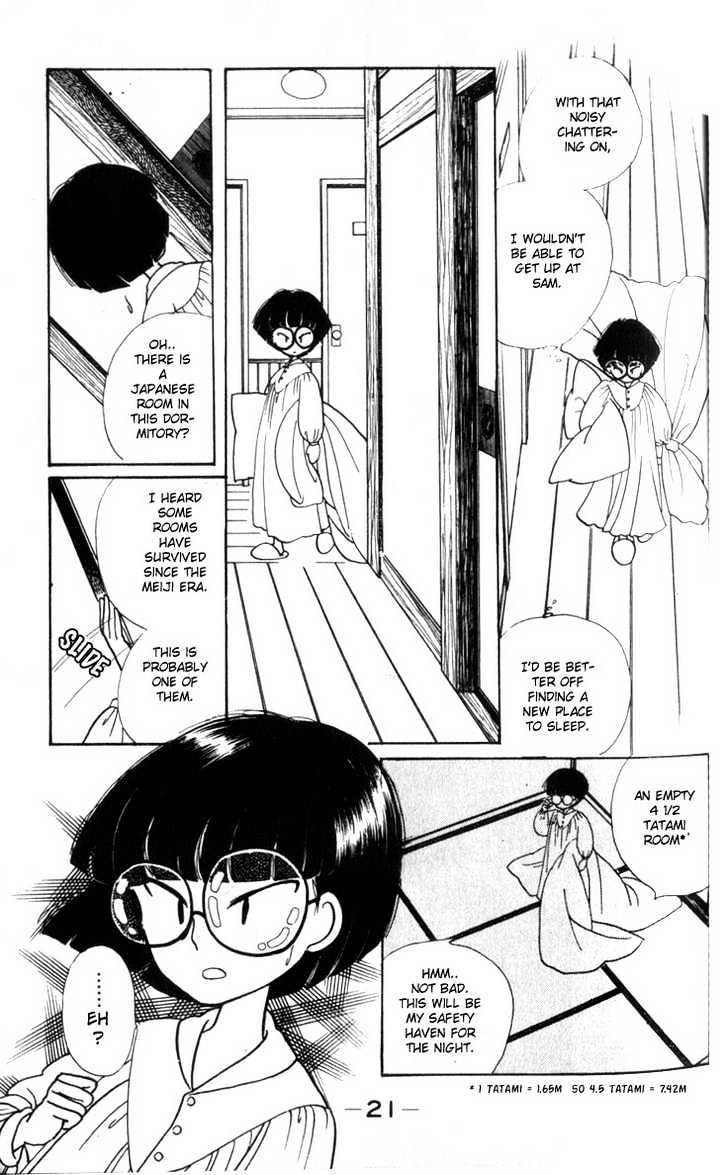
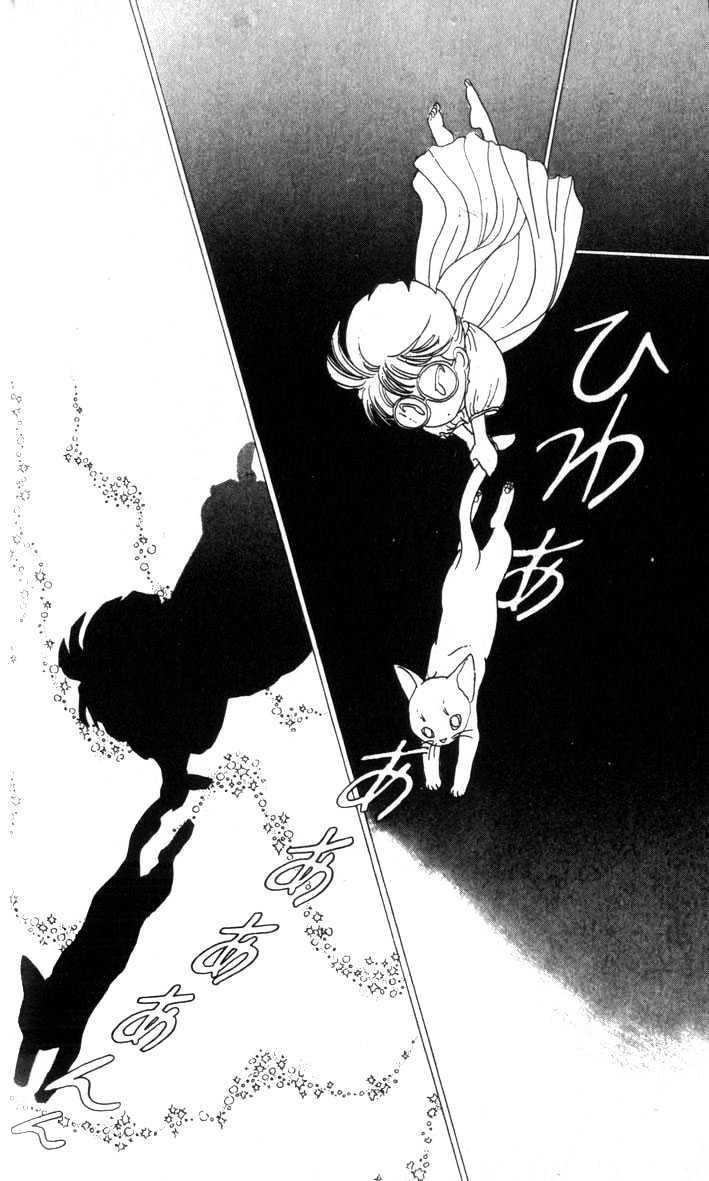 Appearances change. The boy she’s crushing on grows a cat’s tail, while she becomes a beautiful, blonde, long-haired woman.
Appearances change. The boy she’s crushing on grows a cat’s tail, while she becomes a beautiful, blonde, long-haired woman.
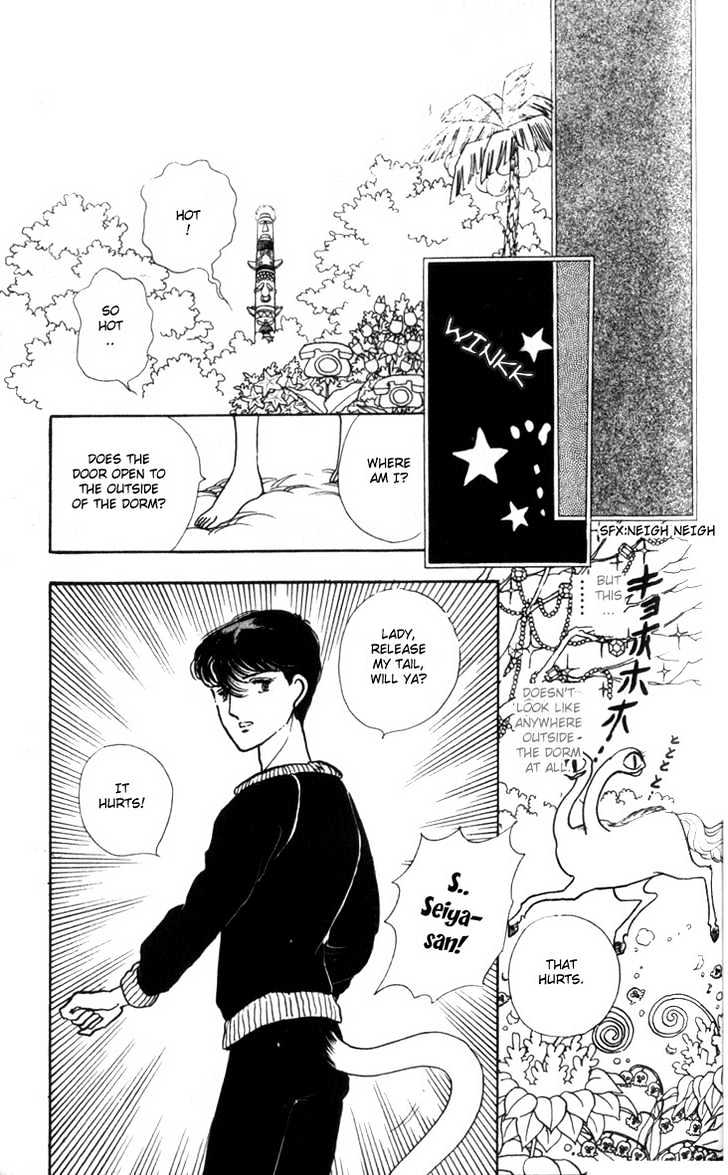
One is reminded of what happens to Youko in Twelve Kingdoms, but it’s far less distressing, or of the numerous isekai tensei series where what one is reincarnated as is part of the story’s initial hook, of which Tensei Shitara Slime Datta Ken is probably the most famous. But here it’s just another aspect of the wish-fulfillment at the heart of the story, and perhaps of the genre as a whole.
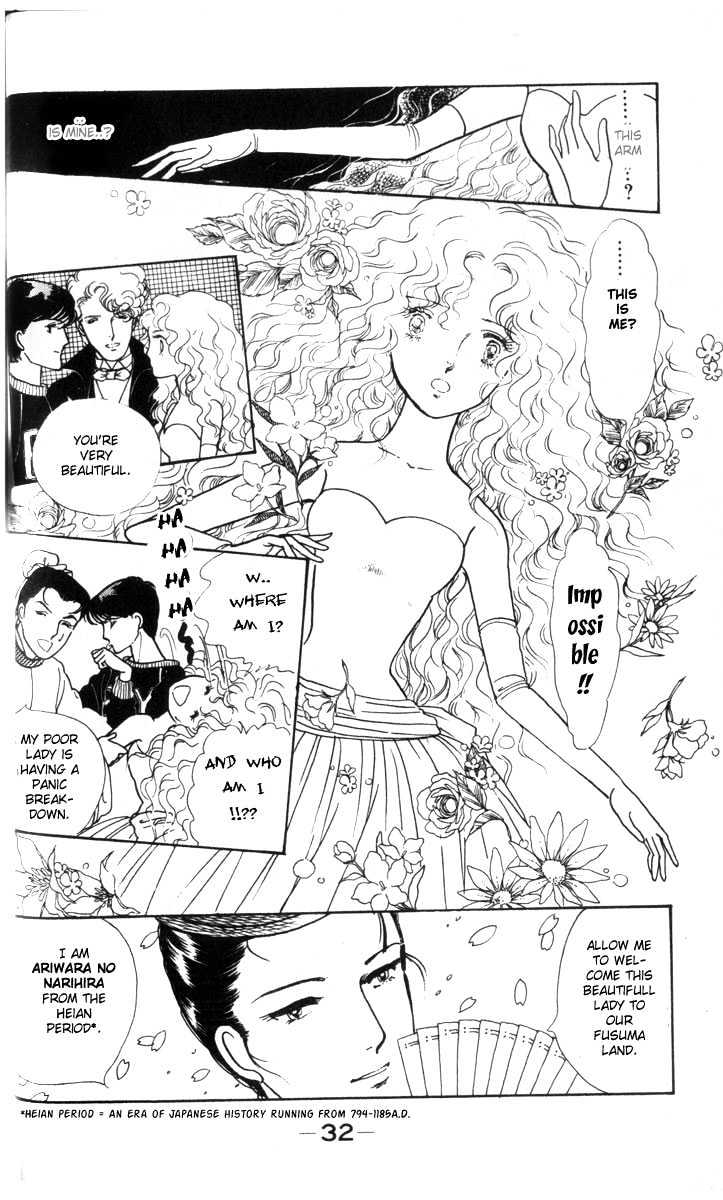
Kachiko meets Hikoboshi, Dracula, Ariwara no Narihara, all of whom become members of her reverse harem.
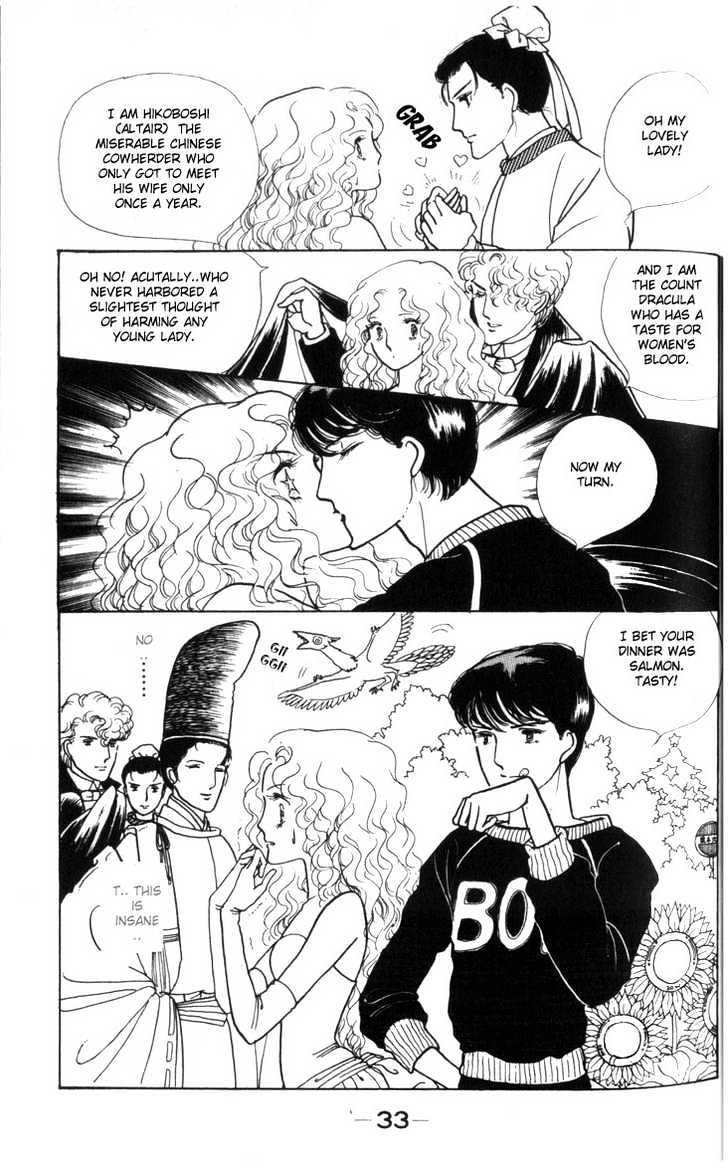 A world likened to a dream, where one can do whatever they want. Is everyone there just a human indulging in their fantasies? She flies home through a door.
A world likened to a dream, where one can do whatever they want. Is everyone there just a human indulging in their fantasies? She flies home through a door.
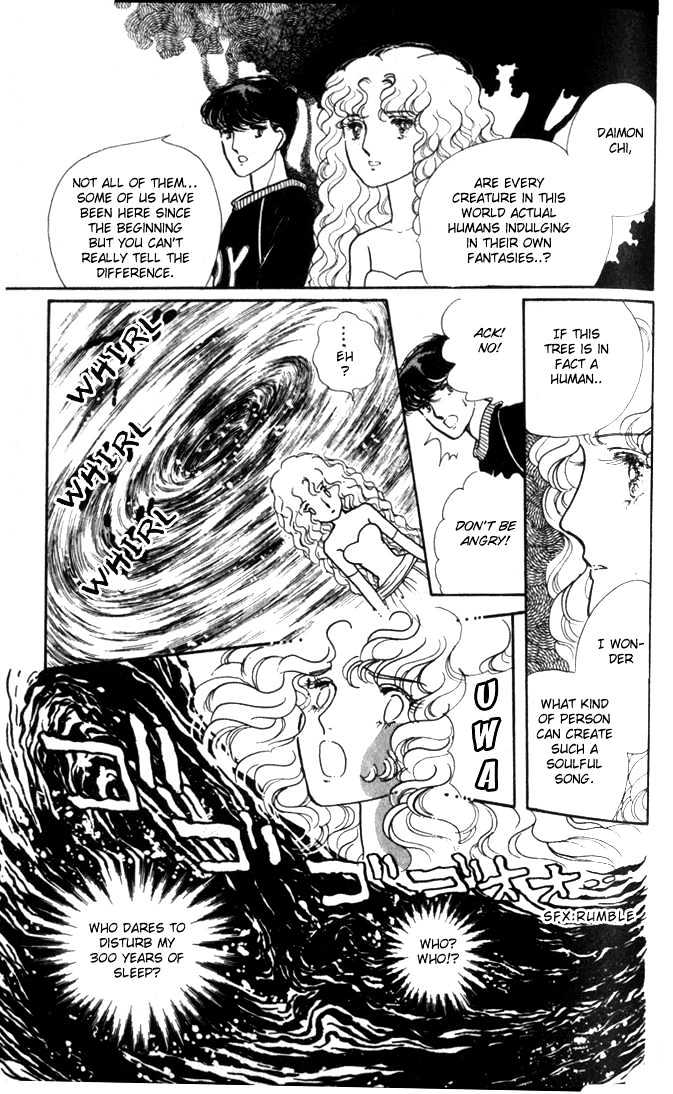
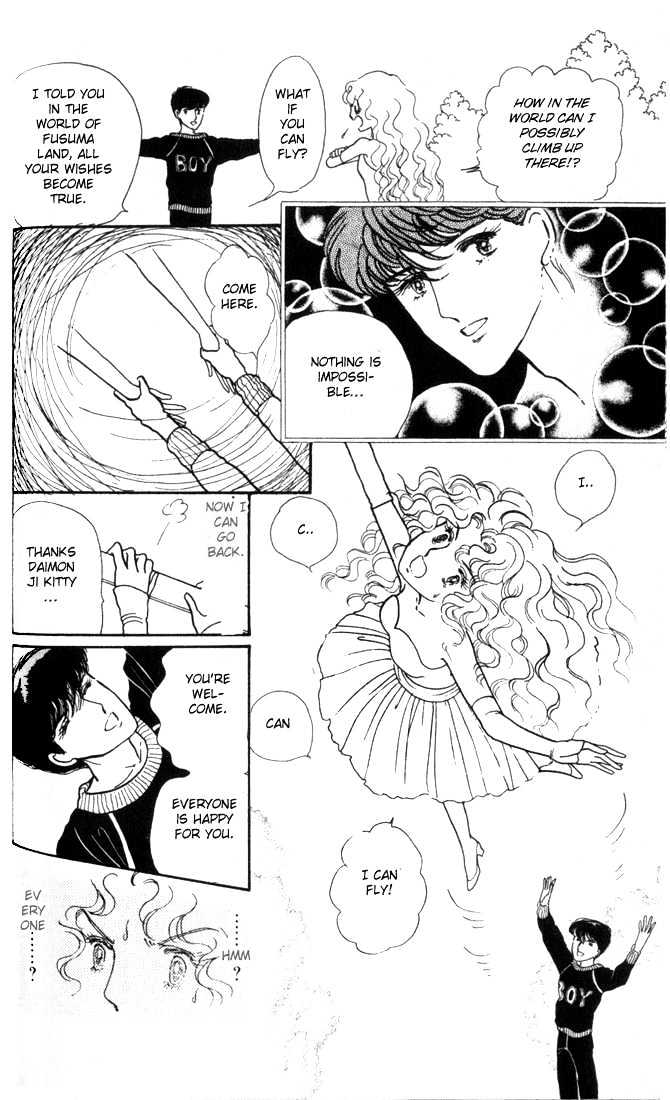
“I must protect my friends from this world”, Kachiko cries out at the time, but it sounds blatantly hypocritical.
On her 2nd trip to Fusuma Land, Kachiko appears in Narihara’s bed, and meets Princess Kaguya.
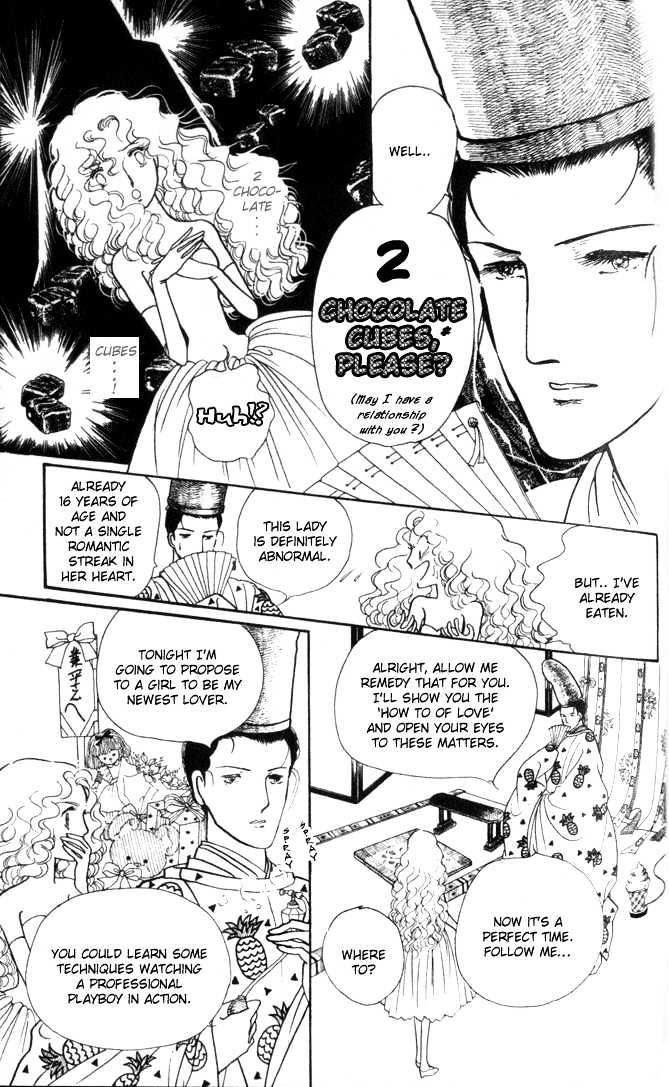
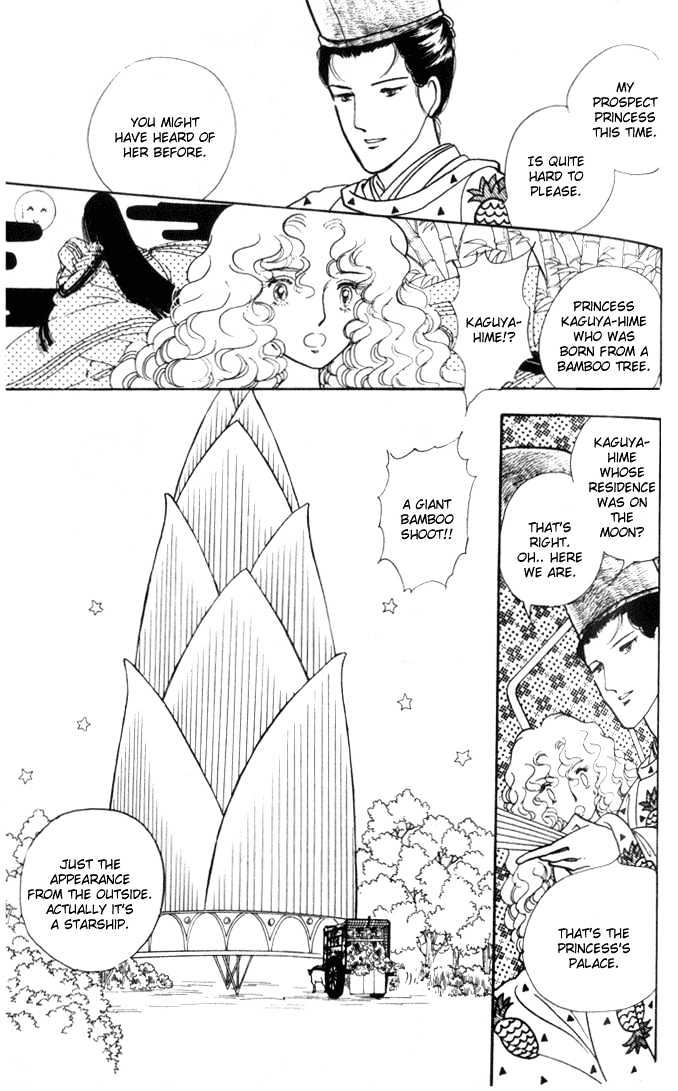 She goes on further adventures, meeting Dracula (who wants to be a surfer) among others.
She goes on further adventures, meeting Dracula (who wants to be a surfer) among others.
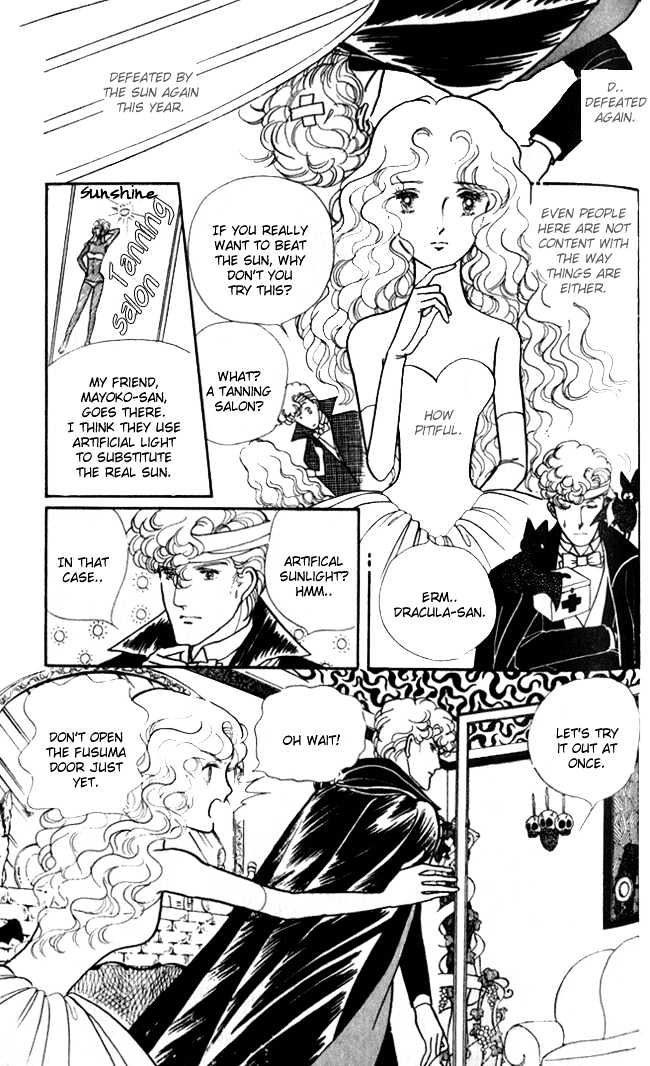 Mayoko, a classmate, comes too, but if someone’s happy they won’t transform.
Mayoko, a classmate, comes too, but if someone’s happy they won’t transform.
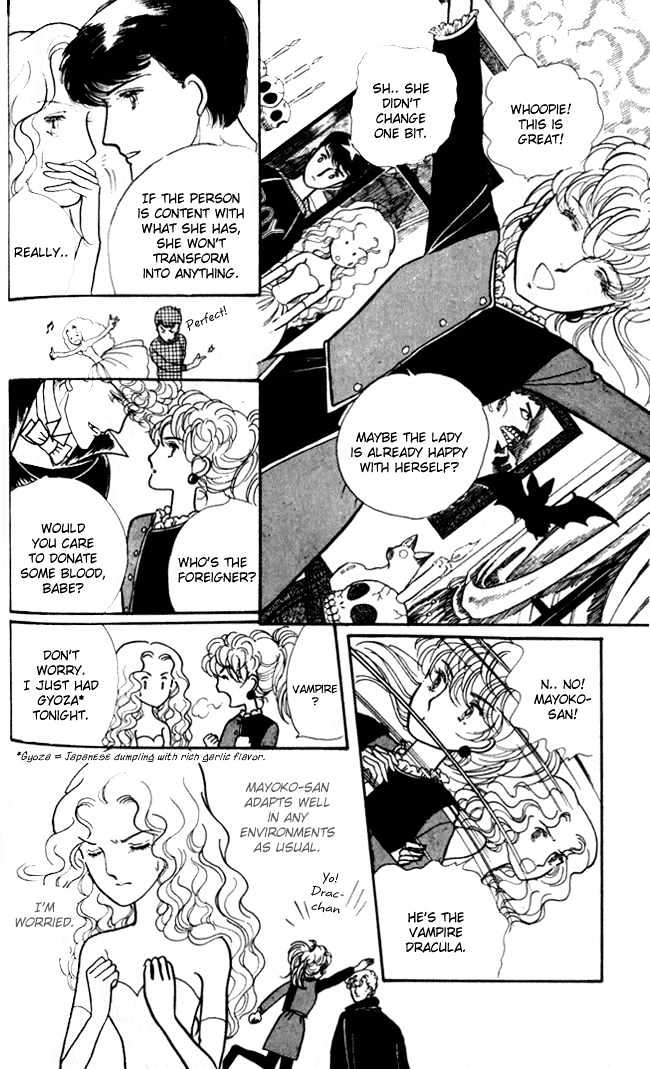 The secret of the other world is revealed, and the March Hare leads them through again.
The secret of the other world is revealed, and the March Hare leads them through again.
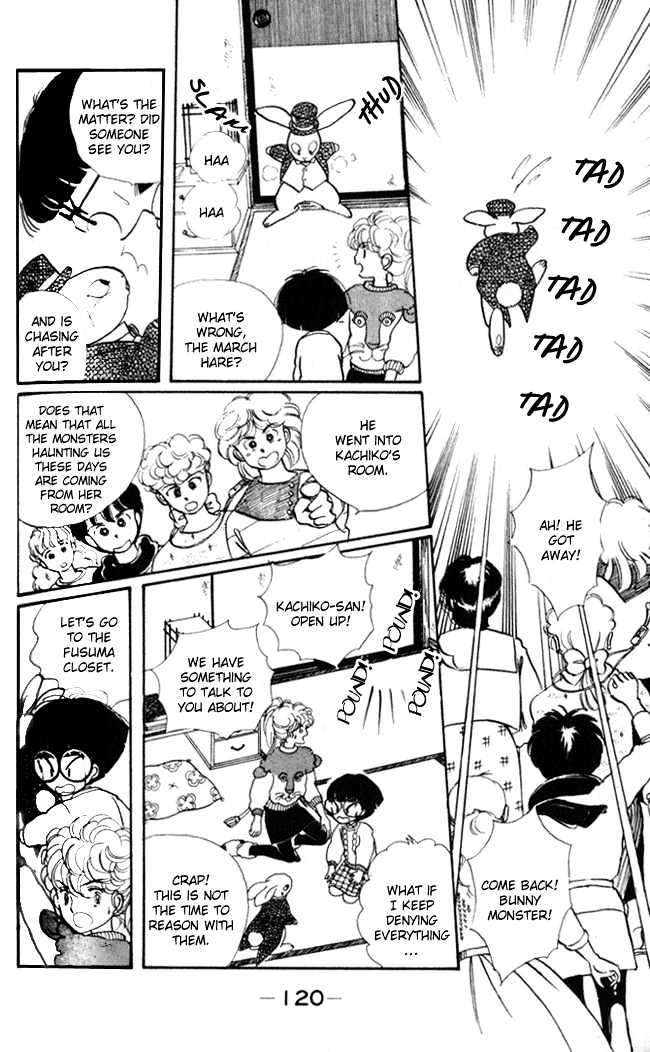
Fusuma Land 4.5 has the kind of constant back-and-forth travel you don’t usually see in isekai, where if not simply a one-way trip ala most contemporary isekai stories, is at the very least a climactic event, not something you see every chapter. Kyou Kara Maoh! and Digimon Adventure 02, admittedly, do something similar, as does Inuyasha if you count it.
The manga even features an otherworldly invasion! Well, it kind of does. A dragon and Orihime show up briefly on Earth, and get chased by other characters we’ve met. But their main accomplishment is to reveal the secret, not to try to take over Earth.
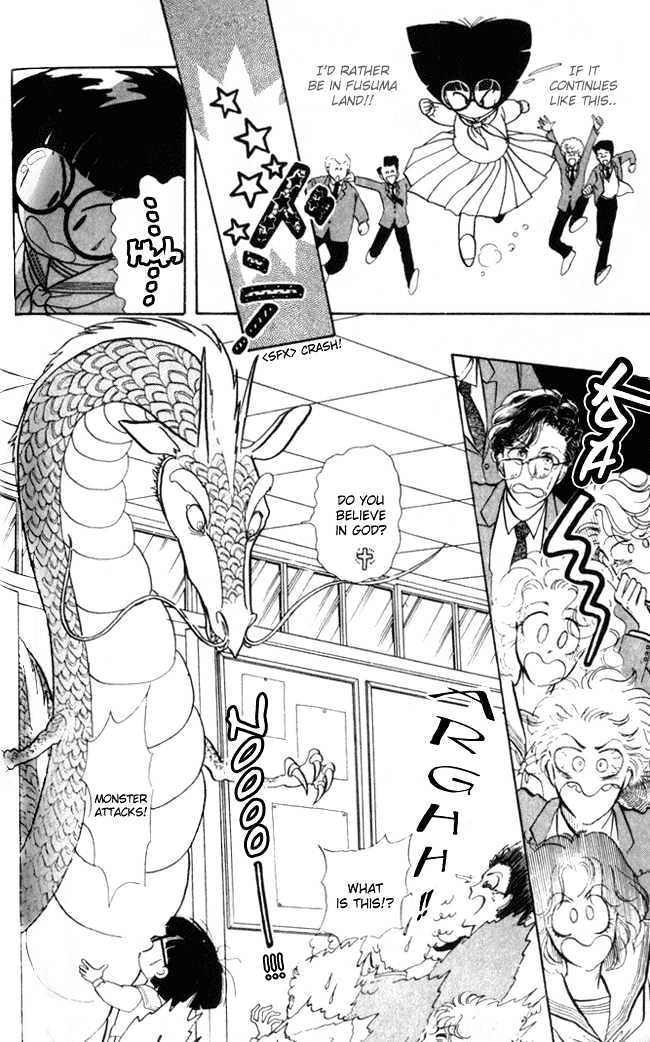
Everyone wants to leave Earth for Fusuma Land – on the one hand it proves Kachiko’s not alone, and in a way she comes across as wrapped up in herself the way which many teenagers are. On the other hand, what does it say about Earth that everyone wants to leave?
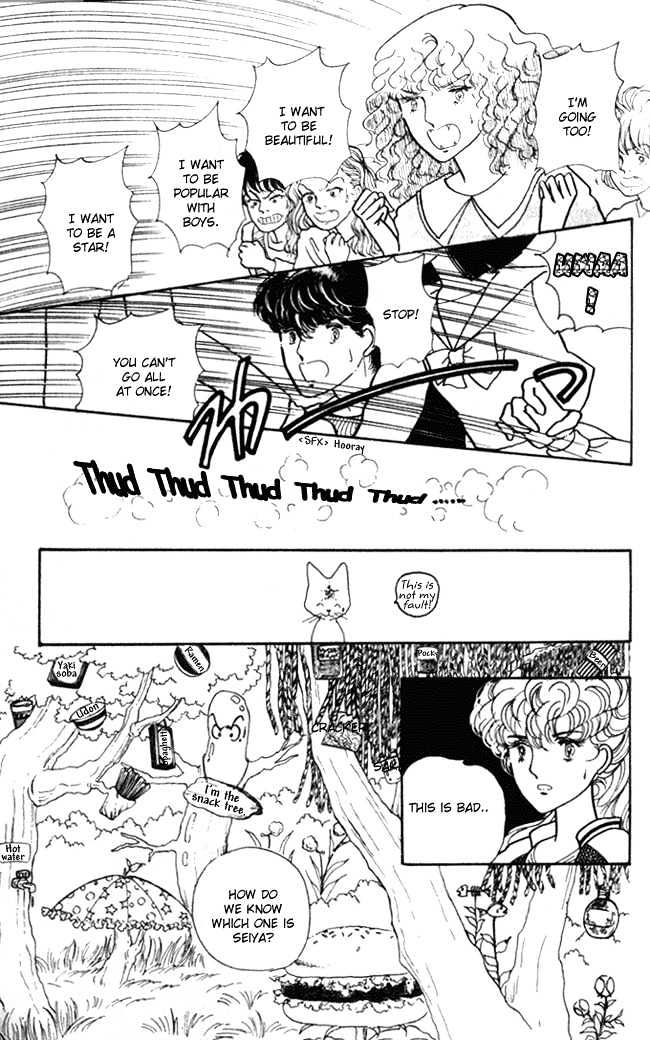
But the door can’t handle so many people.
Seiya has his own problems and goes to Fusuma Land, where he wants to stay, and turns into a tree. And then we get the climax.
Was it just a dream?
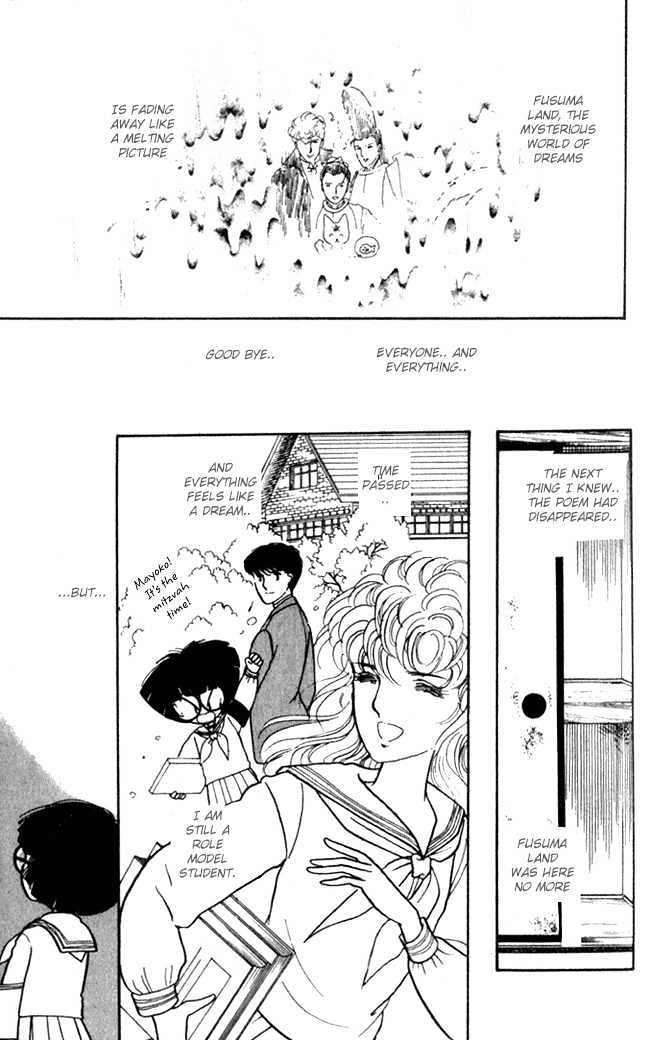 Likening the other world to dreams is common enough, for dreams, at least the fun ones, involve a merger of one’s own self with strange alien worlds. It’s rarely this explicit (outside Escaflowne) in later Japanese isekai, but appears in both the Wizard of Oz and Alice in Wonderland, and Fusuma Land 4.5 explicitly references the latter, in addition to a variety of other literary figures.
The world itself I think has something of a dreamlike quality, between the wishes getting instantly granted and the massive crossover of literary, mythological, and historical figures, but these are also part of its charm. At a mere six chapters, its short, but it’s worth the read.
Likening the other world to dreams is common enough, for dreams, at least the fun ones, involve a merger of one’s own self with strange alien worlds. It’s rarely this explicit (outside Escaflowne) in later Japanese isekai, but appears in both the Wizard of Oz and Alice in Wonderland, and Fusuma Land 4.5 explicitly references the latter, in addition to a variety of other literary figures.
The world itself I think has something of a dreamlike quality, between the wishes getting instantly granted and the massive crossover of literary, mythological, and historical figures, but these are also part of its charm. At a mere six chapters, its short, but it’s worth the read.